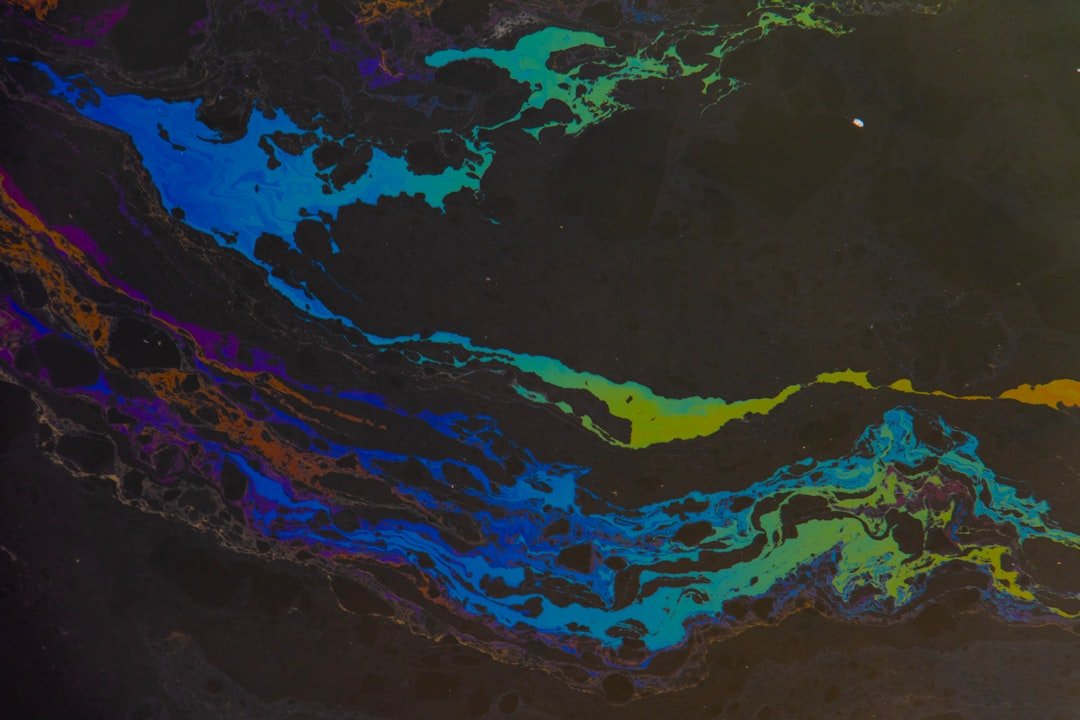Plastic pollution’s effects on the environment have become one of the 21st century’s most urgent environmental problems. Millions of tons of plastic debris are dumped annually into rivers, seas, and landscapes worldwide, demonstrating the astounding amount of plastic waste produced. The delicate balance of environmental health is upset by this buildup of plastic, which also degrades ecosystems’ natural beauty. Plastics can take hundreds to thousands of years to decompose, which makes their persistence in the environment especially worrisome.
Key Takeaways
- Plastic contamination has a significant impact on the environment, leading to pollution of waterways, soil, and air.
- Wildlife is adversely affected by plastic contamination, with animals suffering from ingestion and entanglement in plastic waste.
- Humans face health risks from plastic contamination, including exposure to harmful chemicals and toxins leaching from plastics.
- The economic costs of plastic contamination are substantial, including cleanup efforts, loss of tourism revenue, and damage to industries such as fishing and agriculture.
- Single-use plastics play a major role in plastic contamination, contributing to the majority of plastic waste in the environment.
They consequently build up in natural habitats and landfills, which has long-term ecological effects. Also, contamination of soil and water is a result of plastic pollution. Even the world’s most remote regions are now home to microplastics, which are microscopic pieces of plastic that are less than five millimeters in size. Both terrestrial & aquatic ecosystems are at risk because these particles have the ability to absorb toxic chemicals from their surroundings and release them into the environment.
In addition to visual pollution, the effects also include habitat degradation, nutrient cycle changes, and food chain disruption. Plastic’s environmental effects are getting worse as it continues to dominate waste streams, so immediate action is needed to lessen its effects. The Impact of Plastic Pollution on Wildlife Although plastic pollution is a widespread problem, its effects on wildlife go well beyond human concerns. Because they frequently confuse plastic waste for food, animals may ingest it, which could result in internal injuries, malnourishment, or even death. For example, it has been documented that sea turtles eat plastic bags because they mistake them for jellyfish.
The same is true for seabirds, which frequently consume tiny plastic particles that can build up in their stomachs and cause starvation. In addition to being devastating for individuals, the effects also endanger entire species and ecosystems. Wildlife is at risk from entanglement in plastic waste in addition to direct ingestion.
Because of this entanglement, people may drown or suffer serious injuries.
| Issue | Impact | Statistics |
|---|---|---|
| Marine Pollution | Threatens marine life and ecosystems | 8 million tons of plastic enter the ocean each year |
| Health Risks | Contaminates food and water sources | Microplastics found in 90% of table salt |
| Environmental Damage | Contributes to climate change and habitat destruction | Plastic production emits 400 million tons of CO2 annually |
Also, plastic pollution of habitats disturbs feeding and breeding grounds, which lowers population sizes. Because ecosystems are interdependent, the loss of one species may have a domino effect on others, endangering biodiversity overall. The Health Risks of Plastic Contamination for Humans Although the effects of plastic pollution on the environment and wildlife are worrisome, so are the health risks to people. Numerous dangerous substances found in plastics, such as phthalates, bisphenol A (BPA), and heavy metals, can seep into food and drink. Research has indicated that these substances have the potential to interfere with endocrine processes and are associated with a number of health problems, such as obesity, cancer, and reproductive disorders.
Individuals are unintentionally exposed to these harmful substances when they eat or drink tainted food or water. Also, the discovery of microplastics in human tissues & organs raises concerns regarding the long-term health effects of these particles. Microplastic ingestion or inhalation has been linked to inflammation and other negative health effects, according to research. This risk is further increased by the possibility that these particles contain pathogens or dangerous chemicals.
The threat to public health is growing as plastic pollution continues to seep into drinking water supplies & food chains, underscoring the pressing need for all-encompassing solutions. The Economic Costs of Plastic Contamination Plastic contamination has numerous and complex economic ramifications. The expenses incurred by governments & municipalities for waste management and cleanup are substantial. Programs for recycling & litter removal need more funding because plastic waste is present in natural areas.
Beaches and parks that are overrun with plastic waste also hurt the tourism sector by drawing fewer tourists & costing local economies money. Also, plastic pollution places a significant burden on the fishing industry. Fish populations may decline as a result of entanglement in abandoned nets, and fishermen who must fish in contaminated waters may incur higher operating expenses. Beyond the short-term expenses, there are long-term consequences for ecosystem services that sustain tourism, agriculture, and fishing. These industries’ economic survival is at risk as ecosystems deteriorate as a result of plastic pollution, which emphasizes the necessity of taking proactive steps to address this issue.
Plastic Contamination and Single-Use Plastics Single-use plastics contribute significantly to the escalation of plastic contamination. Straws, plastic bags, cutlery, and packaging are among the items made to be thrown away right away after only one use. Single-use plastics are a major contributor to the total amount of plastic waste, so this convenience comes at a high environmental cost.
Consumer demand for affordable and convenient products is fueling the growth of single-use plastics. However, the long-term effects of their use are frequently outweighed by this convenience. To lessen the environmental impact of single-use plastics, several nations have started enacting laws prohibiting or restricting them.
The reduction of plastic pollution can be achieved by society by promoting reusable alternatives and responsible consumption practices. Solutions to Combat Plastic Contamination Reducing plastic pollution necessitates a multipronged strategy that includes collaboration between communities, governments, businesses, and individuals. One successful tactic is to advocate for reusable items rather than single-use plastics. Reusable containers, bags, & utensils can greatly cut down on the amount of plastic waste produced.
Consumer behavior can also be changed by educational initiatives that increase public awareness of the negative effects of plastic pollution on the environment. Systemic changes are required to effectively combat plastic contamination in addition to individual actions. Policies that encourage recycling efforts and provide incentives for companies to embrace sustainable practices can be put in place by governments.
Programs for extended producer responsibility (EPR), for example, hold producers responsible for the lifecycle of their goods & incentivize them to create products that are simpler to recycle or reuse. Also, spending money on cutting-edge technologies for recycling and waste management can increase productivity and lower the quantity of plastic that ends up in landfills or the environment. Recycling and Appropriate Waste Management Recycling keeps waste out of landfills and lowers the need for new plastic production, which helps to mitigate plastic contamination. Recycling initiatives that are successful can turn waste plastics into useful materials for new goods.
However, because of a lack of infrastructure and public awareness, recycling rates are still low in many areas. Communities must make investments in easily accessible recycling facilities & teach locals correct sorting techniques in order to optimize recycling efforts. In order to address plastic contamination, proper waste management is equally important. To reduce the negative effects on the environment, comprehensive waste management systems that incorporate collection, sorting, recycling, & disposal are essential.
Communities can drastically cut down on the quantity of plastic that enters ecosystems by putting effective waste management techniques into place locally. Also, encouraging organic waste composting programs can help reduce landfill pressure and promote a sustainable culture. The Government & Industry’s Role in Addressing Plastic Contamination Through innovation and policy-making, governments and industries play crucial roles in addressing the problem of plastic contamination. Enacting laws to lessen the production and use of plastic is crucial to bringing about systemic change. To encourage companies & consumers to look for alternatives, governments can impose taxes on the production of certain single-use plastics or ban them altogether.
It is also the duty of industries to implement sustainable practices across their supply chains. Company dependence on conventional plastics can be decreased by funding research and development for biodegradable materials or creative packaging solutions. Governments and businesses must work together because these alliances can result in the creation of all-encompassing plans that take into account both consumer behavior & production methods. In conclusion, the environment, wildlife, human health, & economies around the world are all seriously threatened by plastic pollution. Effectively addressing this urgent issue, however, is achievable through the combined efforts of people, communities, governments, and industries.
Through the implementation of strong policies aimed at reducing the generation of plastic waste and encouraging sustainable practices like recycling and responsible consumption, society can strive toward a cleaner & healthier future for all living things on this planet.
Plastic contamination is a pressing environmental issue that is contributing to the degradation of our planet. According to a recent article on building resilient food systems in a changing climate, plastic pollution is not only harming marine life but also infiltrating our food systems, posing a threat to human health. This highlights the urgent need for sustainable solutions to reduce plastic waste and protect our ecosystems.



